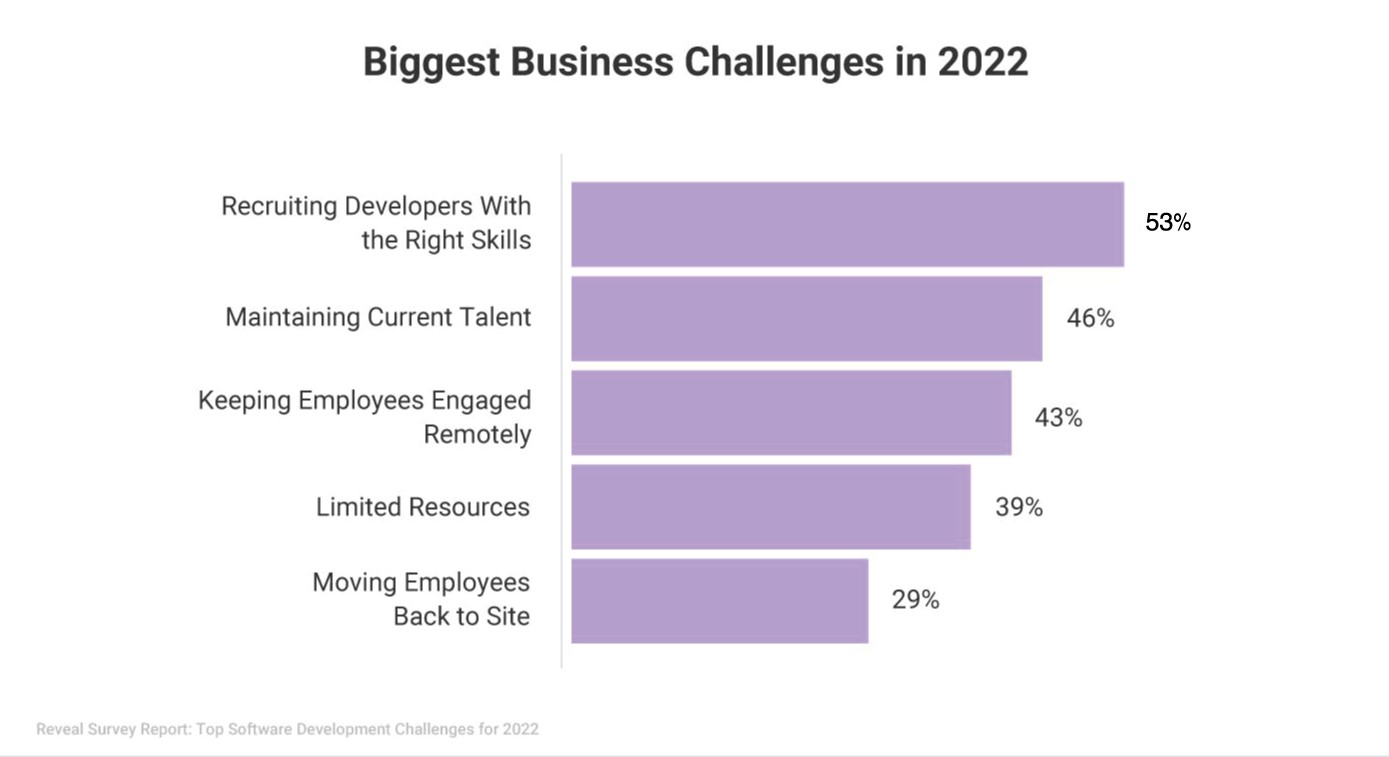301 vs 302 Redirects Guide – Which One To Choose?
Redirects help you navigate users to relevant content. To illustrate more clearly, imagine you’re renovating your office. You have temporarily moved to another location to run your business. To help your customers find you, you have placed a signal...

Redirects help you navigate users to relevant content.
To illustrate more clearly, imagine you’re renovating your office. You have temporarily moved to another location to run your business. To help your customers find you, you have placed a signal or banner with your new office address in your original office. This helps your users reach you more easily.
That’s a redirect.
Since you’re moving your office for a short time and will return to your original office once the renovation is over, this is called a temporary redirect.
If you’re moving your office once and for all, navigating your customer to your new office is called permanent redirect.
Unlike redirecting users in offline stores, it happens subtly in online stores. In fact, the user won’t even know they’re being redirected to another relevant page or website.
So, like the banner, the 301 and 302 redirects help you redirect your audience to the relevant page.
However, many webmasters get confused about which redirect to use. Instead of a permanent redirect, they use a temporary redirect, which affects their SEO.
So, to help you avoid that mistake, I have created this blog post on HTTP 301 vs 302 redirects, explaining when to use which redirects and why.
Keep reading!
What Is A 301 Redirect?
A 301 redirect is a status code that permanently redirects your user from one page to another.
Your page could:
Contain outdated content Become Irrelevant Completely removed Be a 404 error pageIf your user lands on such a page, it frustrates them.
To remove such a negative user experience, 301 redirects help you.
Still, people wonder, “What is the purpose of a 301 redirect?”
Imagine you ran a seasonal marketing campaign, and it is over. Instead of removing the page, use a 301 redirect to forward site visitors to a relevant landing page.
So, the backlink, the authority you have built, and the referral traffic it drives won’t be wasted as it passes to the new landing page.
That’s the biggest advantage and purpose of a 301 redirect – it passes the link juice and authority of your old page to the new one.
When to use 301 redirects?
Incorrectly using 301 redirects could result in loss of link equity and lead to a drop in rankings.
So, to avoid that, here are the scenarios to opt for 301 redirects:
Similar Pages
When your website has multiple pages sharing the same set of keywords, then it leads to keyword cannibalization.
As a result, the search engine gets confused about which page to rank and might rank the least important page, leaving your desired page hanging.
Let me explain it with an example. Let’s say you have two similar blog posts: “How to build a landing page?” and “How to create a landing page?” Both topics discuss the same information and focus on similar keywords, which will confuse search engines.
So, to avoid it, choose your most important page (let’s say it is blog A), apply 301 redirects on the least important page (let’s say it is blog B), and direct users to the important page (blog A).
404 Page
A 404 error page can ruin the user experience.
Here is an example: Imagine you visit a website to find a solution to your problem. But once you land, if you see a 404 error page, you’ll be irritated and frustrated, right? You’ll lose trust in that website and may never return.
That’s the damage a 404 page can do.
This is an ideal situation for applying 301 redirects and navigating the user to a relevant page to enhance the user experience.
Changing Domain
301 redirects will bridge your old and new domains.
Just because you’re rebranding, why waste all that hard work and time spent building and ranking that old domain?
And what about your loyal customers? How will they find you?
Most of your customers and users won’t be aware of your new brand name.
So, instead of losing those customers, you can use 301 redirects to navigate them to appropriate pages on your new domain.
This helps you pass the authority and link juice you built and drive potential traffic and leads to your new domain.
Changing URL Site Structure
If you’re changing your poorly optimized URL or reorganizing your website’s folder structure, you must implement a 301 redirect.
It enhances the site architecture by creating sub-directories or categories, making navigation easy for users. It also helps search engine crawlers easily crawl, index and rank your pages.
Using two different URL versions will also damage the user experience and can lead to keyword cannibalization.
So, use 301 redirects to change your URL from http to https.
The same goes for www and non-www versions – stick to one version and redirect the other to the main page.
Delete or Move Content
There are plenty of reasons to delete a page:
No longer offering the service or the product The page is no longer available The page is no longer relevant, etc.In that case, instead of deleting and wasting the link juice, you can use 301 redirects and pass them to relevant pages.
The same goes for moving content. If you’re just moving your content, apply a 301 redirect to the new page to help the user gather relevant information.
Redirecting Old Campaign Traffic
Imagine, long back, you ran an ad campaign that got you good results.
People have bookmarked the landing page and are visiting it.
So, instead of wasting this potential traffic, you could redirect potential customers to relevant landing pages using a 301 permanent redirect and still improve your ROI.
Benefits Of Using 301 Redirects
Now that you know what 301 redirects are and when to use them, let’s look at the benefits of using 301 redirects:
SEO
Many still doubt whether the 301 redirects affect or contribute to SEO.
The answer is, “if it is done right, it will contribute to your SEO.”
Google might take some time to index the content or pass the link juice and authority considering the relevance of the source page and the new page.
However, once Google indexes it, you can drive the same traffic and leads from your old page without much effort.
The latest stats reveal that 301 redirects pass 90-99% authority to the new page.
User Experience
One of the major advantages of the 301 redirects is the user experience.
It will improve the user experience by seamlessly redirecting users to the new page and providing relevant and valuable results.
Link Equity
When the search engine encounters a page that has been permanently moved and redirected to another relevant page, it will transfer the link equity to the new one. This helps you enjoy the ranking and search traffic it drives.
What Is A 302 Redirect?
302 redirects, also known as temporary redirects.
302 redirects is a status code that temporarily redirects the users from one page to another.
Unlike 301 redirects, 302 redirects don’t pass link juice or authority to the new page. They only transfer traffic.
When To Use 302 Redirects?
302 redirects are one of the most valuable and effective techniques. Here are some scenarios where you can use a 302 redirect:
Temporary URL Change
If you’re revamping your webpage, using a 302 redirect will be beneficial.
Since revamping could take time to design, finalize, and implement, you can redirect traffic to another relevant page using a 302 redirect, keeping your user intact and satisfied.
And in another instance, using 302 redirects could also help you collect feedback on your new web page design.
Wondering how?
Instead of updating the web page with a new design, you can implement a 302 redirect to navigate users to another page with the new design and collect feedback.
Once you have analyzed your user’s response, you can remove the redirect and update your web page with the new design.
A/B testing
For landing page optimization, A/B testing is crucial.
Each and every element on the landing page will contribute to your conversion rate.
So, to conduct A/B testing, you have to create two separate variations of a landing page: Page A and Page B.
Use 302 temporary redirects to test the two variations and know which version performs the best.
Once you have finalized your best landing page, remove the 302 redirect and update the content or replace it with a 301 permanent redirect.
Geographic Redirects
If you’re running a business worldwide and investing in international SEO, talking to your audience in their language is important.
In this case, you can use 302 redirects to effectively redirect the audience to a specific version of your web page based on their geographic locations.
This helps you improve your website’s user experience, SEO, and conversion rate.
Benefits Of Using 302 Redirects
Now you know what 302 redirects are and when to use them. Let’s look at the benefits of using 302 redirects:
Flexibility
302 redirects can be used as dynamic redirects, as they can redirect users based on their locations, devices, and user preferences to provide a more personalized experience.
Temporary Solution
Without affecting the source page and preserving the original URL in the search engine index, you can test different marketing strategies using 302 redirects.
For example, imagine you’re running a Christmas promotion. You have created a separate landing page for it. So, instead of just focusing only on PPC, by using a 302 redirect, you can use your organic traffic to boost your sales and ROI.
Likewise, as already mentioned, for conducting an A/B test, the temporary redirect helps to collect data.
301 vs 302 Redirects: Key Differences
Here are the key differences between 301 and 302 redirects:
Permanence vs. Temporariness
301 redirects are permanent. Once the link is directed, you shouldn’t change it. Applying another redirect can lead to a chain of redirects and affect your ranking and traffic.
On the other hand, 302 are temporary redirects that can be removed and changed with different redirects at any time.
User Experience
Both redirects offer a great user experience.
However, if you fail to implement the redirect properly or induce a chain of redirects, your page’s loading speed will slow down and affect your user experience.
Link Equity
A permanent redirect will pass the link equality to the new page.
A temporary redirect won’t pass the link equity to the new page. It will remain with the old source page but only redirect traffic to the new page.
How To Choose The Right Redirect?
Many webmasters miss the point of using the appropriate redirects based on their specific needs.
Here are the steps you should follow to choose the right redirects:
Step 1: Identify the type of URL change
Do you want to redirect your users to your new page indefinitely? Then, opt for a permanent 301 redirect.
If you plan to redirect users only for specific outcomes, such as updating the web page or A/B testing, opt for a temporary 302 redirect.
Step 2: Desired Outcome
A temporary 302 redirect is the perfect option if you want to run a seasonal marketing campaign or create a different landing page for each target location.
But if you’re shifting your business model entirely, you must opt for a permanent 301 redirect.
Step 3: SEO implications
Regarding SEO implications, Link juice or link equity and page authority is crucial.
A 301 redirect is appropriate for transferring your link equity to your new landing page.
If you don’t want to pass your link equity and still want your link equity to be with your old page, use a temporary 302 redirect.
Best Practices For Redirects
Now, you know how to choose redirects based on your needs and desired outcomes. Let’s just look at the best practices for redirects:
Implementing Redirects Correctly
To implement redirects correctly, you have to ensure it on different levels:
Use the correct HTTP code: Once you have identified the type of redirect you’re going to use, ensure you use the correct code—301 for permanent redirects and 302 for temporary redirects. Set up redirects in your web server configuration: Use .htaccess files from Apache – or if you’re using WordPress – use the Rankmath plugin to set up your redirects. Test redirects thoroughly: Once you have set up the redirect, test it using different browsers and devices to ensure that it works as expected. Avoid redirect chains: Multiple redirects will affect your page’s loading speed, confuse search engines, and affect your ranking.Monitoring Redirect Performance
Check user experience: Monitor how your redirects impact user experience. If they spend more time on the page, it’s good. If not, check whether the new page is relevant to the original content. Use web analytics: Track the number of redirects, the pages with redirects, and the status code. Test redirects frequently: Setting up a periodic redirect test to ensure it performs correctly would be beneficial. Check search console: Monitor how the search engine treats your redirected page and identify redirect-related issues to resolve them.Troubleshooting Redirect Issues
Inspect web server logs: Look for error messages or warnings related to redirects. Test redirects from different devices and locations: As said, 302 redirects can be used for geographical redirects. Ensure the redirects work correctly across different platforms, devices, and locations. Use SEO tools: Use tools like SEMRush, Ahrefs, Moz, and Screaming Frog to identify broken redirects using their broken link checker.Conclusion
Choosing between 301 and 302 redirects boils down to understanding your desired goal.
If you want to permanently redirect your user, use 301 redirects.
If you want to temporarily redirect your user, use 302 redirects.
If you still have a doubt, use 302 temporary redirects for now, and when you gain clarity, you can make appropriate changes.
Using the right redirect strategy, you can maintain your site’s ranking, improve user experience, ensure seamless navigation, and drive potential traffic.

 Lynk
Lynk 































